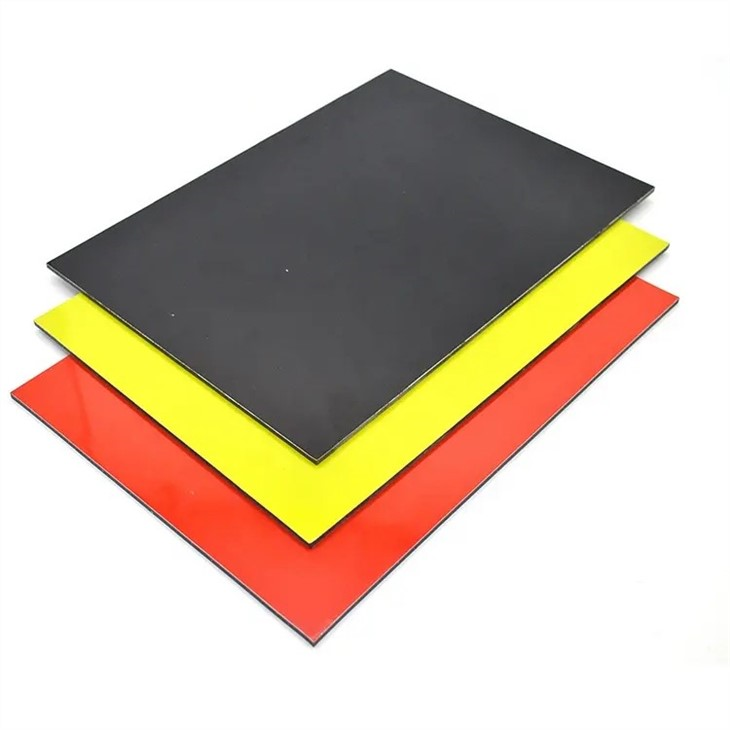Hey there! As a supplier of PVDF aluminium cladding, I'm super stoked to chat about its thermal properties. You know, PVDF aluminium cladding is a real game - changer in the building materials scene, and understanding its thermal features can really help you make the right choice for your construction projects.
Let's start with the basics. PVDF, or Polyvinylidene Fluoride, is a high - performance polymer that's used as a coating on aluminium cladding. This combination brings a bunch of benefits, and thermal performance is definitely one of the big ones.
One of the key thermal properties of PVDF aluminium cladding is its insulation ability. In buildings, proper insulation is crucial. It helps to keep the indoor temperature stable, which means you won't have those crazy temperature swings between hot and cold. When you use PVDF aluminium cladding, it acts as a barrier that reduces the transfer of heat between the inside and outside of a building.
During the hot summer months, the cladding can reflect a significant amount of solar radiation. The PVDF coating has good solar reflectance properties, which means it bounces off a lot of the sun's heat before it can penetrate the building. This helps to keep the interior cooler, reducing the load on your air - conditioning system. You can imagine how much energy you'll save on cooling costs! For example, in a large commercial building, using PVDF aluminium cladding can lead to substantial savings in electricity bills over time.
On the flip side, in winter, the cladding also helps to retain heat inside the building. It slows down the rate at which heat escapes through the walls. This is especially important in colder climates where keeping the warmth in is essential. By using PVDF aluminium cladding, you're not only making the building more comfortable for the occupants but also being more energy - efficient.
Another aspect of its thermal properties is its resistance to thermal expansion and contraction. Temperature changes can cause materials to expand and contract, and if a material can't handle these changes well, it can lead to cracks, warping, or other structural issues. PVDF aluminium cladding has a relatively low coefficient of thermal expansion. This means that it can withstand significant temperature variations without undergoing excessive expansion or contraction. So, even in areas with extreme temperature differences between day and night, the cladding will maintain its integrity and appearance over time.
Now, let's talk about how these thermal properties compare to other similar building materials. If you're looking at something like PE Aluminium Composite Panel ACP Sheet Cladding Wall Cladding, PVDF aluminium cladding generally outperforms in terms of thermal performance. PE - coated panels may not have the same level of solar reflectance or insulation capabilities as PVDF - coated ones.
The Export 3/4mm Wholesale Aluminum Sanwich Materials are also a popular option in the market. While they offer good strength and durability, PVDF aluminium cladding provides an added edge when it comes to thermal management. The PVDF coating enhances the overall thermal efficiency of the cladding, making it a better choice for energy - conscious projects.
Building Material ACP PE Coating Aluminum Composite Panel is another alternative, but again, the thermal properties of PVDF aluminium cladding make it stand out. The PVDF coating's ability to resist heat transfer and adapt to temperature changes gives it an advantage in maintaining a stable indoor environment.
When it comes to installation, the thermal properties of PVDF aluminium cladding also play a role. Since it's less prone to thermal expansion and contraction, it's easier to install and maintain a proper fit. This means that during the installation process, you won't have to worry as much about leaving extra space for expansion, which can simplify the installation and reduce the chances of future problems.
Moreover, the long - term durability of PVDF aluminium cladding in relation to its thermal properties is quite remarkable. The PVDF coating doesn't degrade easily due to exposure to heat or sunlight. It maintains its thermal performance over the years, which is a huge plus for building owners. You won't have to worry about replacing the cladding frequently just because its thermal efficiency has declined.
In addition to its direct thermal benefits, PVDF aluminium cladding can also contribute to the overall sustainability of a building. By reducing energy consumption for heating and cooling, it helps to lower the building's carbon footprint. This is becoming increasingly important in today's environmentally - conscious world.
If you're involved in a construction project, whether it's a small residential building or a large - scale commercial complex, considering the thermal properties of PVDF aluminium cladding is a smart move. It can offer you long - term savings, better comfort for the occupants, and a more sustainable building solution.
So, if you're interested in learning more about PVDF aluminium cladding or are thinking about using it for your next project, don't hesitate to reach out. We're here to answer all your questions and help you make the best choice for your specific needs. Whether you need advice on the right type of cladding for your climate or want to know more about our product range, we're just a message away. Let's start a conversation about how PVDF aluminium cladding can transform your building!


References:
- Various industry reports on building materials and their thermal properties
- Research papers on the performance of PVDF coatings in different environmental conditions